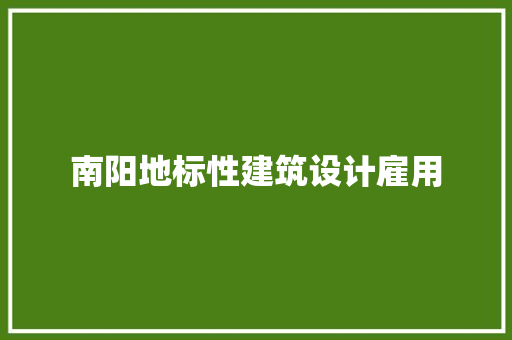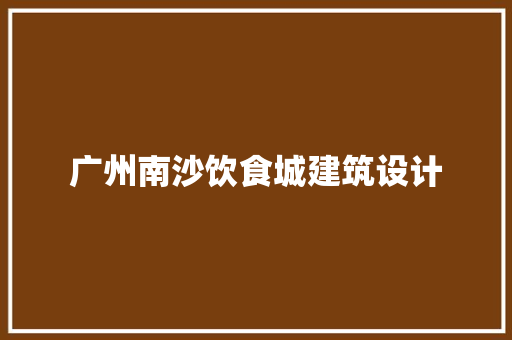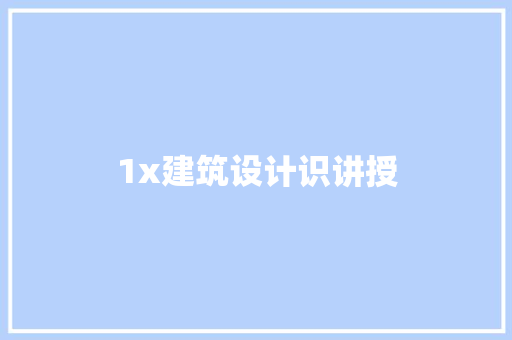Wuzhen, Zhejiang, China (Unfinished)
由于该美术馆不再专门用于展出吴大羽的作品,“吴大羽美术馆”这一名称已不该用,此建筑暂时处于未名状态。然而,这座建筑的设计灵感很大程度上源自于吴大羽。Since a collection of Wu Dayu’s work might not be exhibited at this museum, the name of Wu Dayu Art Museum has been discontinued. We use No Name Art Museum only as a temporary measure. However, the design of this piece of architecture was very much inspired by him.

吴大羽- 1903-1988 -画家、美术教诲家、墨客,中国抽象绘画奠基人。他出生于江苏宜兴,1922年赴法国留学,学习油画和雕塑。返国后与林风眠等在杭州共同创办国立艺术院(现中国美术学院),并任西画系主任。他于1950年代早期失落去教职,从此在上海家中一个十平米的阁楼里作画,直至逝世。
Wu Dayu (1903-1988) was a painter, educator, poet and considered the founding father of Chinese abstract painting. He was born in Yixing, Jiangsu, and went to France in 1922 to study oil painting and sculpture. After returning to China, he established the National Art Academy (now China Academy of Art) in Hangzhou along with Lin Fengmian and others and headed its Department of Western Paintings. Wu lost his teaching position in 1950’s and painted in a ten-square-meter attic at home until his passing.
左:吴大羽的画室©张永和;右:未名美术馆的十平米阁楼展室
Lift:Wu Dayu's studio;Right: 10m2 exhibition attic in No Name Art Museum
我们的建筑设计受到吴大羽的艺术的影响。他在明信片大小的画幅上追求“力”和“宁”的表达,匆匆使我们反复考虑建筑空间的尺度。
Our architectural design was influenced by Wu Dayu’s art. His pursuits of ‘Li’ (force) and ‘Ning’ (serenity) in his small postcard-size paintings urged us to contemplate carefully the scale of architectural space.
吴大羽作品
Wu Dayu's paintings
吴大羽的诗《金刚》更是生动地描述了动态和变革的建筑:
Wu’s poem, King Kong, further portrays vividly the dynamics and volatility of architectural experience:
影子想骗过形体韶光在嘲笑空间我没声又没踪影出入光阴的阴郁Shadow cheats on figureTime laughs at spaceWith no sound and no traceI come in and out of the darkness of time 时 间 | Time
吴大羽的诗进而引发了我们去探究建筑中的韶光维度。
韶光可以被设计吗?
Wu’s poem inspired us to explore the temporal dimension of architecture.
Can time be designed?
借法国哲学家弗郎索瓦·朱利安《论“韶光”》一书作为理论勾引,我们对中西韶光进行了比较:
经典西方韶光:不雅观察者在韶光之外;时空分离;韶光是匀质、可分割、单向拜别、有始有终;明确定义过去与未来,险些无法定义现在;可称为客不雅观韶光。
传统中国韶光:不雅观察者在韶光之内;时空一体;韶光是变革、连续,劈面而来、无始无终;这个韶光永久是现在;可称为主不雅观韶光。
Borrowing French philosopher Francios Jullien’s book On Time for a theoretical guideline, we compared the time of China and Europe:
The classic Western time: The observer is without time; time and space are separated; time is evenly paced, dividable, one directional, with beginning and end. Past and future are clearly defined but not present. This is the objective time.
The traditional Chinese time: The observer is within time; time and space cannot be separated; time varies, is continuous and oncoming, without beginning and end. This time is always present and can be named as the subject time.
中西韶光比较:西上中下©张永和
Comparison of Chinese and Western time. Top: Western, Bottom: Chinese
中国韶光的富有弹性可以被转化为设计的可能性。
The elasticity of Chinese time offers design possibilities.
九曲桥案例:如果一条水面直接跨过去需走3步,折了9次,可能就要走27步,韶光也就延长9倍,空间的感想熏染也随之扩大。
The case of Bridge with Nine Bends: If a body of water can be crossed with 3 steps, with a Nine-Bend Bridge, it may take 27 steps, which means the time is 9 times longer, consequently the space feels much larger.
九曲桥
Chinese Zigzag bridge
我们把中国韶光不雅观和西方透视法结合,设计了一系列楔形空间,包含功能空间和纯建筑空间:这些空间从一个方向被透视浮夸,又在另一个方向上又被压缩;于是时空感知不断变革,显现了时空的不可度量性,带来的是更丰富的时空体验。访客在时空中迷失落,步入一个创造之旅。
We combined the Chinese time and Western perspective and designed wedge-shaped spaces, including both programmed one and pure one: These spaces are stretched by perspective in one direction and compressed in the other; thus, the temporal-spatial perception changes with every move of the visitor. It demonstrates the immeasurability of time and space and enriches the experience to the point where one may get lost and embark on a journey of discovery.
空间张力比拟©张永和
Spatial tension contrast
观点草图©张永和
Concept sketches
空间功能关系草图©张永和
Space-function sketch
未名美术馆是一个时空游戏场。
No Name Art Museum is a playground of space and time.
鸟瞰未名美术馆及周边环境
Bird's-eye view of No Name Art Museum and surroundings
空 间 | Space美术馆建筑实质上供应的是“游”的体验,空间及空间关系自然成为设计焦点。除了透视设计,我们引入了“纯建筑空间”的观点:即一系列室外或半室外空间,构成功能空间之间的过渡;它们的形状具有戏剧性的张力,强化“游”的过程。建筑群总体的格局用“院”和“进”进行组织,形成与传统的对话,同时构成在透视游戏之上的又一体验空间层次。The essence of an art museum is to provide a You or wandering experience. Spatial relationship naturally become the main design focus. Therefore, besides perspectival manipulation, we introduced the concept of “pure architectural space”: a series of outdoor or semi-outdoor spaces serving as transitions among programs. They are configured to possess dramatic tensions, intensifying the temporal and spatial dynamics during the process of journey through the architecture. The overall spatial structure of this building complex is arranged in Yuan (courtyards) and Jin (layers), generating a dialogue with the Chinese architectural traditions and overlaying another layer of experience onto the perspectival play.主入口及接待区 Main Entrance and Reception Area
鸟瞰入口及接待区
Bird's-eye view of main entrance and reception area
左:主入口;右:主入口室内
Lift: Main entrance;Right: Interior space of the main entrance
从主入口看接待区走廊
View of passage to reception area from main entrance
锐角水院(水景待施工)
Water triangle (waterscape to be constructed)
透过楔形窄院的门廊看延续的茶肆前廊
Through the doorway of wedge-shaped courtyard looking at the continuing overhang of tea-room
多功能厅与接待区之间的走廊
Corridor between multi-functional hall and reception area
沿河一侧的接待区和互换中央
Reception area and tea-room along riverside
院 Yuan
楔形窄院
Wedge-shaped courtyard
俯瞰楔形窄院(右)及水院(左)
Overlooking the Wedge-shaped courtyard(right)and the Water-court(left)
从茶肆檐下的半室外空间看楔形窄院
Looking at the Wedge-shaped courtyard from semi-outdoor space under the eaves of the tea-room
回看楔形窄院门洞
Look back the doorway of wedge-shaped courtyard
左:楔形窄院的一端通往画廊主入口,一个楔形天井引入自然光
Art gallery main entrance at one end of the wedge-shaped courtyard, and a wedge-shaped patio bring in natural light
右:楔形窄院沿河一真个狭长开口
A narrow opening at riverside end of the wedge-shaped courtyard
从河对岸看楔形窄院尽头
End of the wedge-shaped courtyard viewed from across the river
事情室区 Studio Area
俯瞰水院及事情室区
Overlooking the Water-court and studios
事情室入口
Studio entrance
室外走廊及半室外走廊交汇
The outdoor corridor and the semi-outdoor walkway converge
院 Yuan
水院
Water-court
俯瞰水院
Overlooking the Water-court
水院设计效果图
Water-court design rendering
水院 (水景待施工)
Water-court (waterscape to be constructed)
水院沿河一端
View of the riverside end of Water-court
沿河步辇儿道
Footpath along the river bank
从河对岸看水院
Looking at the Water-court from the other side of the neighboring river
商业区
Commercial Area
鸟瞰商业区和事情室
Bird's eye view of the commercial building and studios
三角院内檐下的半室外空间
Semi-outdoor space under the eaves in triangular courtyard
展览区
Exhibition Area
俯瞰展览区
Overlooking the exhibition area
画廊次入口
Art gallery secondary entrance
左:画廊室内空间;右:画廊室内效果图
Left: Art galleries interior space; Right: Art gallery exhibition rendering
左:小展厅入口的弧形走廊;右:展厅室内空间
Left: Arc corridor to small exhibition hall entrance; Right: Interior space of small exhibition hall
多功能展厅入口
Multi-functional hall entrance
多功能厅室内
Multi-function hall interior space
院 Yuan
梭形窄院
Spindle-shaped courtyard
俯瞰梭形窄院
Overlooking the spindle-shaped courtyard
梭形窄院及相邻的小展厅入口弧形走廊
Spindle-shaped courtyard and adjacent arc corridor to small exhibition hall entrance
梭形窄院内
In the spindle-shaped courtyard
居 所 Residence
鸟瞰艺术家寓所及多功能厅
Bird's-eye view of artist's residence and multi-functional hall
艺术家寓所客房
Artist's residence guest house
艺术家寓所
Artist's residence
院 Yuan
月牙形窄院
Crescent-shaped courtyard
俯瞰月牙形窄院
Overlooking the crescent-shaped courtyard
在月牙形窄院中看艺术家寓所
View of the artist's residence towards the end in the crescent-shaped courtyard
形 式 | Form
对时空和体验的关注使摆脱了静态的构图,即解除了立体的建筑体量之间及平面的立面元素之间的形式关系。在此,瑞典建筑师莱弗伦兹的工为难刁难我们的启示是巨大的。
Paying attention to time-space experiences allows us a break away from static compositions, which means the formal relationship between stereoscopic volumes and planar elevations are dissolved. Hereto, the work of a Swedish architect, Sigurd Lewerentz, provided us with great inspirations.
莱弗伦茨,圣彼得教堂东立面
Lewerentz,St. Peter's Church east façade
未名美术馆南立面©FCJZ
No Name Art Museum south elevation
俯瞰南立面
Overlooking south elevation
街景 ©FCJZ
Street view
从河对岸看交错的建筑
View of the staggered buildings from across the river
结 构 | Structure此项目的构造体系部分采取无梁混凝土板柱体系,部分为钢构造框架体系。
The structural system of this project is partly beamless concrete slabs with irregular-shaped columns without beams and columns; and partly steel frames.
混凝土无梁板+异形柱构造体系
Structural system of concrete slab with irregular-shaped columns
钢构造框架
Steel frames
地域+材料Regional Culture + Material
除了在空间上,我们也在建筑的材质和色彩上也尊重乌镇,尊重江南,用水泥瓦屋顶、水泥瓦墙面,及素混凝土墙面构成黑白灰的蕴藉色调。
Besides space, we also pay tribute in our design to the vernacular houses in Wuzhen, which is part of Jiangnan (south of the Yangtze River), in terms of material and color. Hence, using clay tiles on the roofs and concrete tiles on the walls as well as exposing concrete walls constitute a rich and subtle color scheme of black-white-gray.
不同材质形成多样的质感
Different materials form a variety of texture
青瓦花格墙
Tile-louvre wall
碎贝壳抹灰墙
Plaster with broken shells
瓦贴面墙
Tile wall cladding
未名美术馆与白墙灰瓦的乌镇建筑和谐相融
No Name Art Museum is in harmony with the white walls and gray tiles of Wuzhen buildings
该建筑的室内及景不雅观目前处于未完成状态。
At this point, the construction of landscape and interior of this building remain incomplete.
———————— 图 纸 ————————
项目信息/ Project Info
客户/Client: 浙江雅达国际康健家当园/Zhejiang Yada International Health Ecologic Park
地点/Location: 浙江省桐乡市乌镇/ Wuzhen, Zhejiang
主持设计/Principal Architect: 张永和/Yung Ho Chang
项目团队/Project Team: 李启悠,王玥,程艺石,李相廷,吴瑕,刘扬,陈尤优,侯佳利/ Simon Lee, Wang Yue, Cheng Yishi, Li Xiangting, Wu Xia, Liu Yang, Chen Youyou, Hou Jiali
工地监察与技能合营/Site Supervision and Technical Cooperation:胡有彬/ Hu Youbin
构造和机电/Structure & MEP: 同济大学建筑设计研究院都境建筑设计院/
Architectural Design (Group) Co., Ltd (Dujing Architectural Design Institute)
构造材料/Structure and Material: 混凝土剪力墙构造,钢构造/Reinforced concrete shear wall and steel structure
建筑面积/Building Area: 6159.59m2
基地面积/Site Area: 124244.34m2
占地面积/Footprint Area: 9152.7m2
建筑高度/Building Height: 4.3m-12.3m
设计韶光/Design Period: 2016
竣工韶光/Completion Time: 2021
拍照师/Photographer:田方方/Tian Fangfang
资料来源、版权所有: 非常建筑 FCJZ









